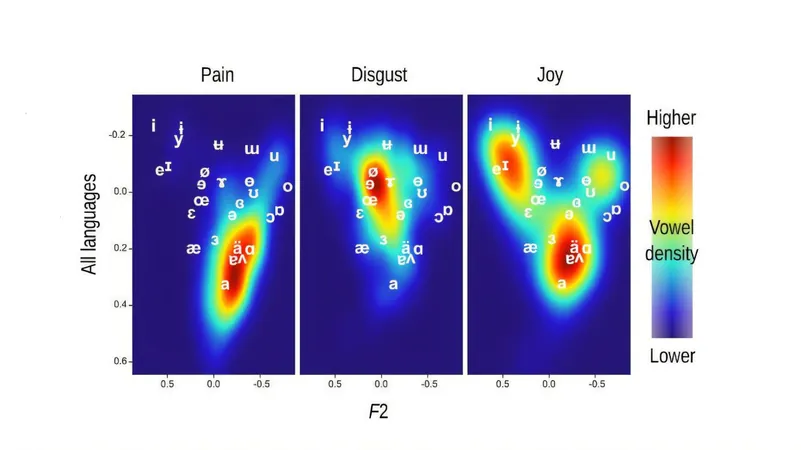
Ouch! New Study Reveals Universal Insights into Pain and Emotion Across 131 Languages
2024-11-12
Author: Emily
Introduction
A fascinating study has unveiled new insights into how people across the globe express pain and emotion vocally, a key aspect of human communication. While it is estimated that there are around 7,000 languages spoken worldwide, this research, published in the Journal of the Acoustical Society of America, specifically focused on the vocal nuances of emotional expressions.
Research Overview
Researchers, led by Maïa Ponsonnet, Katarzyna Pisanski, and Christophe Coupé, embarked on an interdisciplinary journey to investigate how different cultures share similarities in vocalizations of pain and other emotions. By examining expressive interjections—such as "wow!"—alongside nonlinguistic vocalizations like screams and cries, the study examined common vocal patterns that might exist across various languages.
Significance of Vocalizations
The scientists emphasized that understanding these unique vocalizations could be crucial in unraveling the evolution of human speech. “Why did humans develop complex spoken language while other primates did not?” questioned Ponsonnet. “By studying shared vocal expressions, we may discover pivotal moments in our evolution.”
Analysis of Vowel Sounds
The team concentrated on analyzing the vowel sounds found in interjections across 131 languages. They compared these to nearly 500 vowels from vocalizations associated with joy, pain, and disgust. Their findings support the hypothesis that these vocal expressions might correlate with certain social or adaptive functions—such as the loud, piercing cries of infants, which are designed to draw attention and elicit care from parents.
Findings and Patterns
In their investigation, the researchers identified consistent and distinct vowel patterns among vocalizations for pain, disgust, and joy across cultures. Notably, expressions of pain showcased similar open vowel sounds like "a," and wide falling diphthongs such as "ai" in “Ayyy!” and “aw” in “Ouch!”—a captivating revelation suggesting a universal approach to expressing pain.
Unexpected Results
However, the researchers were surprised to find that expressions of joy and disgust did not exhibit the same cultural regularities in interjections. This finding opens up exciting questions about the complexity of emotional expression across different societies.
Future Research
The team’s ambitious plan includes extending their research to encompass a wider array of cultures and emotional expressions. By doing so, they aim to deepen the understanding of how universal vocal expressions develop and what they can tell us about the human experience.
Conclusion
Stay tuned as this groundbreaking study could redefine how we perceive the connections between language, emotion, and humanity at large!









 Brasil (PT)
Brasil (PT)
 Canada (EN)
Canada (EN)
 Chile (ES)
Chile (ES)
 España (ES)
España (ES)
 France (FR)
France (FR)
 Hong Kong (EN)
Hong Kong (EN)
 Italia (IT)
Italia (IT)
 日本 (JA)
日本 (JA)
 Magyarország (HU)
Magyarország (HU)
 Norge (NO)
Norge (NO)
 Polska (PL)
Polska (PL)
 Schweiz (DE)
Schweiz (DE)
 Singapore (EN)
Singapore (EN)
 Sverige (SV)
Sverige (SV)
 Suomi (FI)
Suomi (FI)
 Türkiye (TR)
Türkiye (TR)